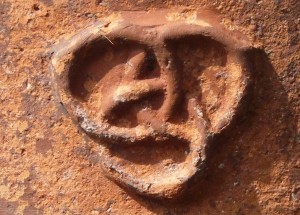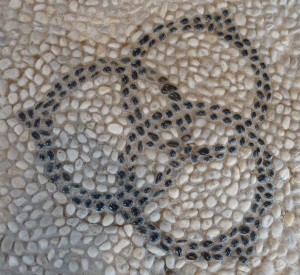One can define the -th Legendre polynomial
in many ways, one of the easiest being to use the generating function
Like many “classical” special functions (which one might call “the functions in Whittaker & Watson” — I find it charming, incidentally, that the PDF of this edition has exactly 628 pages), these can also be defined using representation theory. This is done by considering the group and its
-dimensional irreducible representation on the space
of homogeneous polynomials in two variables of degree
, where the action of
is by linear change of variable:
for
Then, up to normalizing factors, “is” the matrix coefficient of
for the vector
. Or, to be precise (since a matrix coefficient is a function on
, which is 3-dimensional, while
is a function of a single variable), we have
for the elements
(the inner product used to compute the matrix coefficient is the
-invariant one on
; since this is an irreducible representation, it is unique up to a non-zero scalar; the normalizing constant
involves this as well as the normalization of Legendre polynomials.) For full details, a good reference is the book of Vilenkin on special functions and representation theory, specifically, Chapter 3.)
Note also that, since is, up to a scalar, the only vector in
invariant under the action of the subgroup
of diagonal matrices, one can also say that
is “the” spherical function for
(with respect to the subgroup
).
This seems to be the most natural way of recovering the Legendre polynomials from representation theory. Just a few days ago, while continuing work on the lecture notes for my class on the topic (the class itself is finished, but I got behind in the notes, and I am now trying to catch up…), I stumbled on a different formula which doesn’t seem to be mentioned by Vilenkin. It is still related to , but now seen as a representation of the larger group
(the action being given with the same linear change of variable): we have
where is some other normalizing constant, and now
are unipotent elements given by
It’s not quite clear to me where this really comes from, though I suspect there is a good explanation. Searching around the web and Mathscinet did not lead, in any obvious way, to earlier sightings of this formula, but it is easy enough to get thoroughly unenlightening proof: just use the fact that
expand into binomial coefficients, use the formula
for the invariant inner-product, and obtain a somewhat unwieldy polynomial which can be recognized as a multiple of the hypergeometric polynomial
which is known to be equal to (Obviously, chances of a computational misake are non-zero; I certainly made some while trying to figure this out, and stopped computing only when I got this nice interesting result…)








